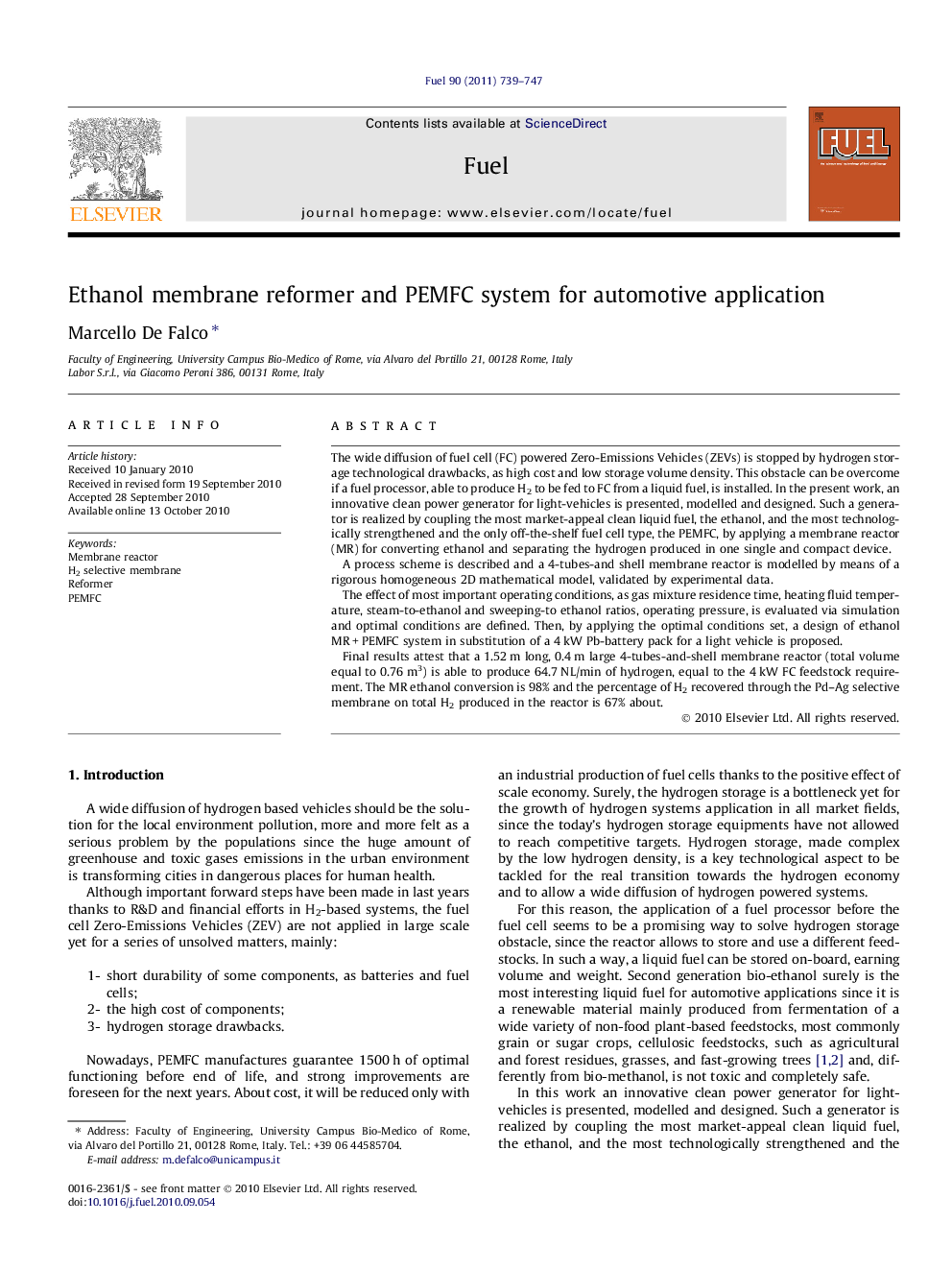| Article ID | Journal | Published Year | Pages | File Type |
|---|---|---|---|---|
| 206664 | Fuel | 2011 | 9 Pages |
The wide diffusion of fuel cell (FC) powered Zero-Emissions Vehicles (ZEVs) is stopped by hydrogen storage technological drawbacks, as high cost and low storage volume density. This obstacle can be overcome if a fuel processor, able to produce H2 to be fed to FC from a liquid fuel, is installed. In the present work, an innovative clean power generator for light-vehicles is presented, modelled and designed. Such a generator is realized by coupling the most market-appeal clean liquid fuel, the ethanol, and the most technologically strengthened and the only off-the-shelf fuel cell type, the PEMFC, by applying a membrane reactor (MR) for converting ethanol and separating the hydrogen produced in one single and compact device.A process scheme is described and a 4-tubes-and shell membrane reactor is modelled by means of a rigorous homogeneous 2D mathematical model, validated by experimental data.The effect of most important operating conditions, as gas mixture residence time, heating fluid temperature, steam-to-ethanol and sweeping-to ethanol ratios, operating pressure, is evaluated via simulation and optimal conditions are defined. Then, by applying the optimal conditions set, a design of ethanol MR + PEMFC system in substitution of a 4 kW Pb-battery pack for a light vehicle is proposed.Final results attest that a 1.52 m long, 0.4 m large 4-tubes-and-shell membrane reactor (total volume equal to 0.76 m3) is able to produce 64.7 NL/min of hydrogen, equal to the 4 kW FC feedstock requirement. The MR ethanol conversion is 98% and the percentage of H2 recovered through the Pd–Ag selective membrane on total H2 produced in the reactor is 67% about.
